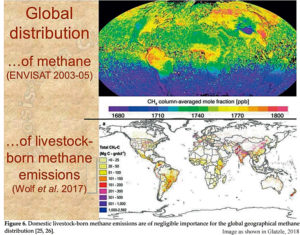A huge source of methane has been discovered deep beneath the surface of Earth, sitting between the upper mantle and lower oceanic crust. The discovery is important as it could provide an insight into the hydrothermal vents that may have helped the planet’s first life emerge. Researchers also argue it could be a source of hydrogen and methane on other planets in the solar system—”even those where liquid water is no longer present.”
The ‘abiotic’ methane—methane that is not formed with organic matter—was found locked inside rocks. Researchers from the Woods Hole Oceanographic Institution (WHOI), Massachusetts, took 160 samples from hydrothermal sites across the globe, including the Mid-Atlantic Ridge, Guaymas Basin, the East Pacific Rise and the Mid-Cayman Rise. After analyzing them with a laser-based microscope, they found that almost all contained pockets of methane.
In their study, published in the journal PNAS, the team says this could be the biggest source of abiotic methane in the world. This reservoir, they say, could account for more methane than was in Earth’s atmosphere before the onset of the industrial era.
The methane appears to have formed by reactions between trapped water and olivine, a group of rock-forming minerals found in the planet’s subsurface. When seawater moves through the deep ocean crust, it mixes with magma-hot olivine. When the mineral cools, the water is trapped inside and a chemical reaction takes place, leading to the formation of hydrogen and methane.
Traditionally, we think of methane—a potent greenhouse gas—as forming when organic material breaks down. When it is emitted into the atmosphere, it has a warming effect far greater than carbon dioxide, although it is far shorter-lived than the latter, disappearing after about a decade.
However, methane is also known to exist on the seafloor. It is released through deep-sea vents—geothermally heated fissures on Earth’s crust. In 2016, scientists with the Ocean Exploration Trust discovered over 500 methane spewing vents off the west coast of the U.S.
However, the source of the seafloor methane has remained something of a mystery. “Identifying an abiotic source of deep-sea methane has been a problem that we’ve been wrestling with for many years,” study author Jeffrey Seewald, a senior scientist at WHOI, said in a statement.
Lead author Frieder Klein added: “We were totally surprised to find this massive pool of abiotic methane in the oceanic crust and mantle. Here’s a source of chemical energy that’s being created by geology.”


